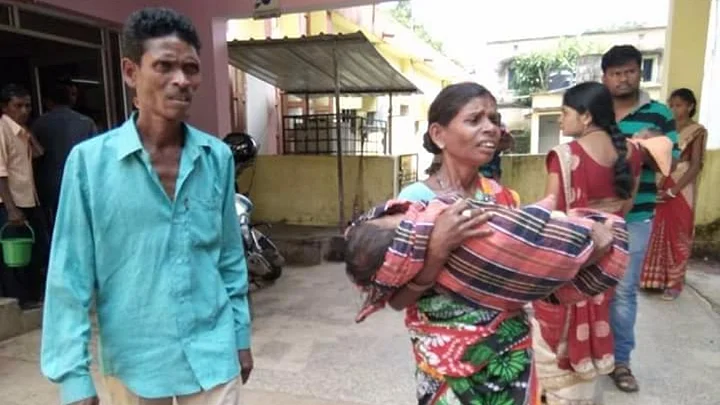On 4 October, three years ago, India developed an indigenous vaccine against the fatal Japanese Encephalitis (JE). Yet on Wednesday, the number of lives lost due to the latest outbreak of the disease in Odisha’s Malkangiri district stood at 29 and the fatalities keep rising.
The current fatalities, after 24 people had died in 2012, have exposed the dark realities of the state of healthcare in Odisha. More than 21 villages in Sikhpali, Kalimela, Korkunda and Pandripani areas are in the grip of the disease that spreads through mosquito bites.
What Ails: Absence of Doctors, Vaccines and Medicines
The Malkangiri district has only one paediatrician while three positions are lying vacant. The most affected Korkunda area has no doctors in its Community Healthcare Centre (CHC) and is run by a pharmacist.
Malkangiri has 52 doctors for 37 hospitals against a sanctioned strength of 115. Overall, around 2,000 posts for doctors are lying vacant in the state. The CHCs in the district also have poor diagnostic facilities.
Similarly, vaccinations are very rarely administered. Gobind Madkami, a villager, says, “Though government declares the vaccination programmes, they never reach us.’’
JE vaccination in India started in 2006 following large outbreaks of the disease in districts of Eastern UP and Bihar. It was included under Universal Immunization Program (UIP) in the 181 endemic districts. After its launch in India on 4 October 2013, the central government distributed it freely to the endemic states.
However, Odisha has not received its share so far. Moreover, the Annual Health Survey of Registrar General of India says that only 29.6 percent of Malkangiri’s population is covered under the immunisation programme.
Illiteracy and Lack of Awareness in Remote Villages
NGOs working in the area claim that the disease first showed up in Sundargarh district in 1989 was contained with concerted efforts.
The lack of awareness among the villagers of Odisha and the absence of monitoring have caused the recurrence. The state government distributed mosquito nets but never followed it up with campaigns to help them understand the use.Ratnakar Pati, Volunteer
What makes it worse is the low literacy rate of the district (31.26 percent). Many villagers don’t even go to doctors when the symptoms show up.
Reason of Recurrence
Pigs, which spread the infection through mosquitoes which breed in contaminated water, are still being reared by the villagers in close proximity.
State Government Not Taking Quick Action
A team of doctors from MKCG medical college and hospital in Berhampur was sent on 26 September and two more teams were rushed a couple of days ago. When ministers from the state’s health ministry visited, on Monday, the National Health Mission MD sanctioned Rs 50 lakh to the district headquarters hospital for medicines and other necessities to tackle the disease.
Carrier pigs need to be isolated. During the infection, vaccination cannot be administered . So we are all here to provide and facilitate all assistance to contain the disease.Atanu Sabyasachi Nayak, State Health Minister
The government is taking steps to relocate pig farms away from the villages while a team of the Animal Resources Department sprays anti-mosquito repellants, Nayak added.
Union Health Minister Jagat Prakash Nadda said that the Ministry of Health is closely monitoring the disease in Odisha.
Cases in India
In the last few years, states like Uttar Pradesh, West Bengal, Bihar, Andhra Pradesh and Northeastern states have been reporting regular cases of JE and it is also spreading to other non-endemic regions.
In July this year, Kolkata reported 21 deaths, while last year, around 200 people died of JE in the country. In 2013, over 1,000 deaths were reported from India. While UP had recorded 500-600 deaths, Bihar reported more than 100 deaths.
(K Ray is a senior journalist based in Odisha)
(At The Quint, we question everything. Play an active role in shaping our journalism by becoming a member today.)
